
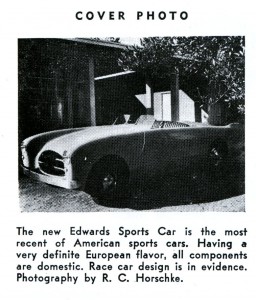
The Inside Cover Of This Magazine Proclaimed: “The new Edwards Sports Car is the most recent of American sports cars. Having a very definite European flavor, all components are domestic. Race car design is in evidence.”
Hi Gang…
Sports cars and postwar America go hand-in-hand.
Which is ironic because you can count the number of individual American sports cars from 1945-1950 on probably just two hands. These “babies” were rare back then, and are like “vapor” today – you can barely find the ones that are around. And very few talk about the history of American sports cars in the immediate postwar era too.
So why do we talk about them here?
The reason is that the history from 1945-1950 of American sports cars is critical to appropriately understanding the “build-up” to the fiberglass bodied sports cars we love in the ‘50s. To understand one group – you have to understand the other group. In this case, we know where to look for the right answer on the proverbial “chicken and egg” question.
And…. that’s what we’re trying to do here at Forgotten Fiberglass. So off with our story.
Early Postwar American Sports Cars
The era from 1945 through 1950 was “heady” in terms of talking about sports cars in America. World War II devastated the production of cars in Europe, so while cars were being designed and built there – production and in some cases “design,” lagged. But what was happening in America in terms of the development of these cars?
The names of the “players” during this time are familiar – and not so familiar. But one group that didn’t participate were the manufacturers from Detroit. Instead, sports cars were being developed by folks like Frank Kurtis, Paul Omohundro, Norman Timbs, DM Nacional (Mark Wallach), and just a few others – very few.
Which is why the Edwards Sports Car’s introduction was so important in 1949.
It marked one of the first times in the immediate postwar era that a sports car was built, celebrated, and held out as a promise of what was going to come to America. It heralded the new age of creation and design – and it was built to race, too. The fact that early American sports cars were often “dual-purpose” cars and in many cases were driven to the race they were going to participate in, is a strange notion for us today – but true in every way for the ‘40s and early to mid 1950s.
Edwards Sports Cars Research Team:
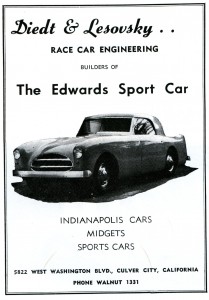
This ad from “Diedt & Lesovsky” who built the body appeared inside the same issue of Road & Track in December 1949.
I’ve been wanting to cover this car for some time for the reasons I’ve outlined above. And we’ve assembled a crack team of people who have helped us learn more about this car – one of them being Phil Remington who participated in a significant part of the build of this car (the Edwards R-26 Sports Car) back in the late ‘40s.
Also included in this team is Chuck Tatum who worked for Sterling Edwards in the early and mid ‘50s, Bob Whitmer who was a lifelong friend of Sterling Edwards, and Alden Jewell – consummate automotive historian. We’ll have lots to share about this special car in the near future.
Another reason for covering this now is that the car is coming up for auction in November 2011. Click here to read more about the car and the auction near Chicago, Illinois. It’s an exciting time to learn about these early postwar American sports cars, so let’s take a look at what Road & Track had to say about one of America’s first postwar sports cars in late 1949.
The Edwards Sports Car
Road & Track, December 1949
Skiing is usually not associated with automotive design, yet, it was during a trip to the famous slopes of Saint-Moritz that the inspiration for the Edwards Sports Car began. After observing the fine roadability and sheer beauty of European sports cars, Sterling Edwards, Beverly Hills sportsman, returned home with a burning desire for an automobile of this type.
After carefully considering the characteristics of foreign sports cars, Edwards decided his car must have comparable appearance, performance, and roadability. On the other hand, he felt the American roads, drivers, and economic conditions differed so drastically from those on the continent as to make design changes advisable.
Lower gasoline prices and taxes in America obviated the necessity of extremely small engine and chassis size. Availability of vital parts was another important consideration. Being a creative individual, Edwards decided to design and build his own car. The famous firm of Diedt and Losovsky, race car engineers, was chosen to build the new design and Norman Timbs was selected as mechanical engineer.
Chassis specifications read like a blue book of European design. The rigid frame uses large diameter tubing in the BMW manner. All four wheels are independently suspended. Front suspension is by parallel arms and springing is by low rate coils.
A flavor of Mercedes design is shown in the drilled members and steering linkage. Trailing arms and torsion bars are used at the rear. The “old reliable” of midget racing, the Ford V8 “60”, was selected because of its proven ability to withstand high speeds for long periods.
The engine was modified and built-up by Eddie Meyer Engineering. Although the stock Meyer-Ford unit has a displacement of 153 cubic inches, it may be sleeved to 2 liters (122 cubic inches) for competition in European Formula 2 events.
Power is transmitted via a heavy duty clutch and transmission to a drive shaft running over the frame. The differential unit is mounted directly on the frame, driving to each rear wheel thru cardan shafts and universals.
Many automotive authorities who have viewed the Edwards Sports Car have enthusiastically declared it to be “the most beautiful automobile ever built in America.” Using the best of European styling as a guide, a careful blend of artistry and practicality has been made.
Of all-aluminum construction, the body incorporates design features proven by years of grueling race car experience. A generous four-passenger, the Edwards is roomy even by American standards. The metal top, upholstered with leather on the inside, is quickly and easily removed.
When not in use, the rear seat is covered by a quick detachable deck which converts the car to a sleek bi-posto sports. For competition events, the curved windshield may be replaced with racing shields in a matter of minutes.
Runyan, noted for custom interiors, has created a pleated all-leather upholstery ensemble which lends the finishing touch to the elegance of the chef d’ oeuvre. Padded crash pads encircle the cockpit for safety at speed. Although the prototype was built by Edwards as his personal project, a careful study is being made of the market with view to producing the car in limited quantities.
Specifications:
- Wheelbase: 100 inches
- Tread: 52 inches
- Height (with top): 56 inches
- Width: 60 inches
- Engine: Meyer-Ford V8 “60”
- Capacity: 153 cubic inches
- Horsepower: 125 @ 5300 rpm
- Fuel Tank: 27 gallons
- Tire Size: 5.50 x 15
Summary:
Although the article discussed possible production of this car, just one 1949 Edwards sports car was ever built, and this first Edwards sports car would later carry the designation R-26 – the only R-26 ever built. Phil Remington shared with me that the R-26 only appeared in 5 or 6 races, before the body was removed in the early 50’s and given to a good friend of Edwards’ in Chicago, Illinois. More about that in a later story here on Forgotten Fiberglass.
Stirling wanted to use the original chassis from the R-26 on his next sports car – one that would utilize a new aluminum body built in 1952 by Jack Hagemann for racing. It was lighter, smaller, and was not designed with a road worthy “sports car” in mind. The dual-purpose nature of this second iteration of the first chassis would leave that heritage behind, and focus on racing only.
Hope you enjoyed the story, and until next time…
Glass on gang…
Geoff
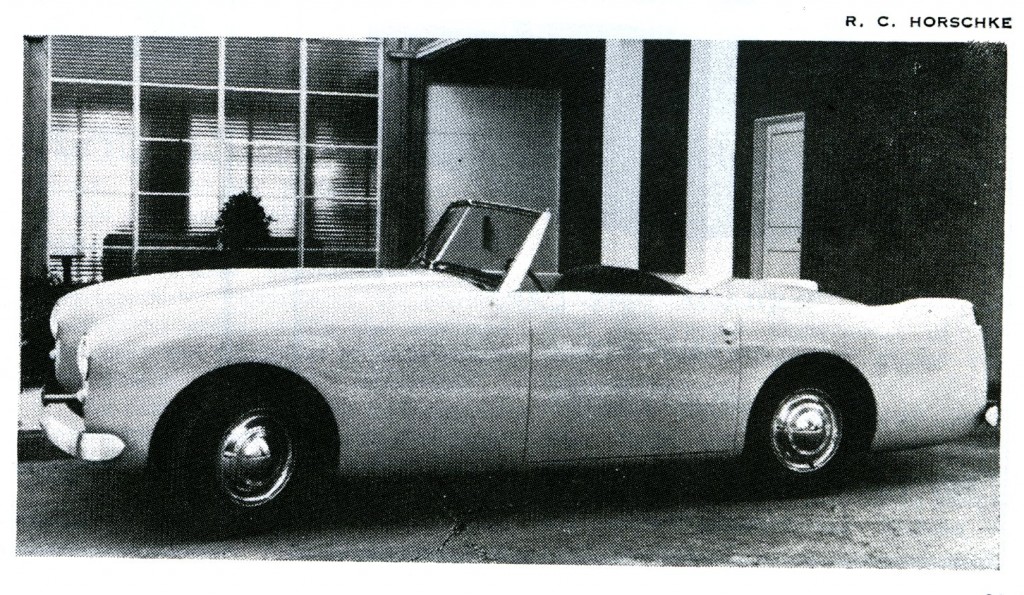
——————————————————————-
Click on the Images Below to View Larger Pictures
——————————————————————-
- The Inside Cover Of This Magazine Proclaimed: “The new Edwards Sports Car is the most recent of American sports cars. Having a very definite European flavor, all components are domestic. Race car design is in evidence.”
- This ad from “Diedt & Lesovsky” who built the body appeared inside the same issue of Road & Track in December 1949.
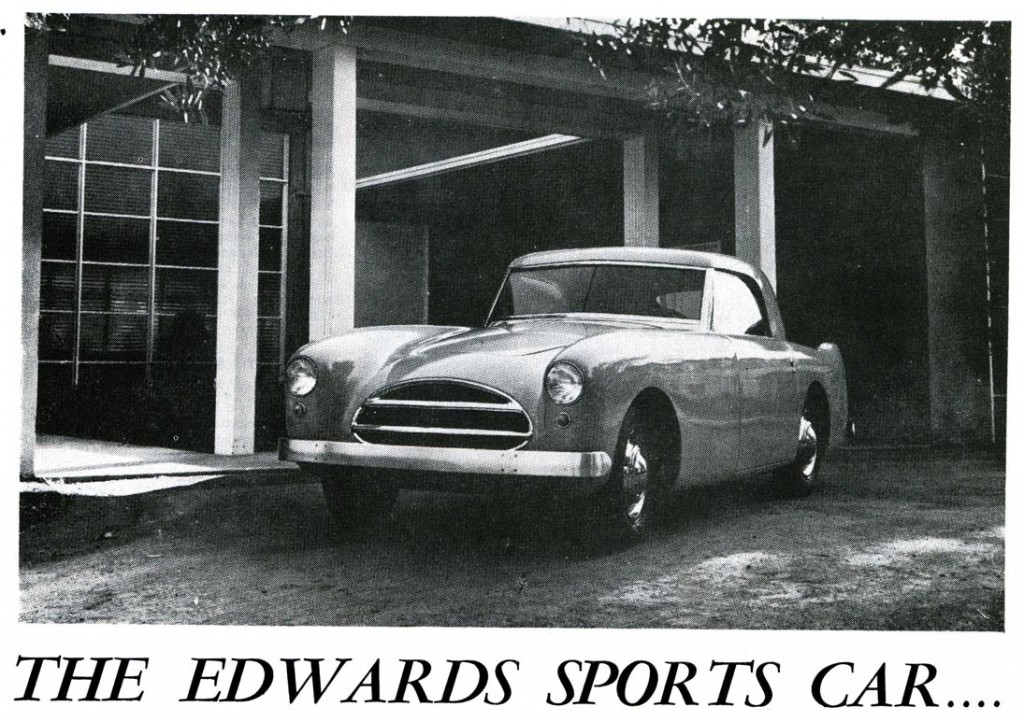

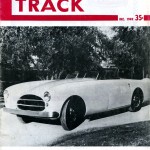
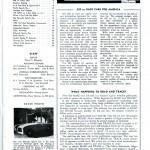
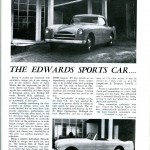
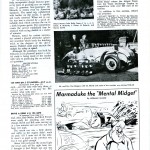
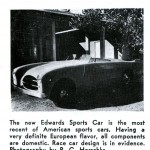
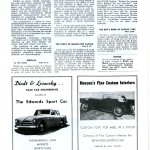
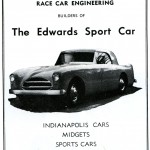
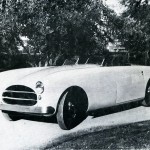
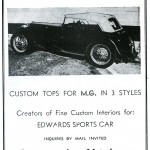
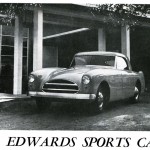
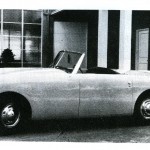
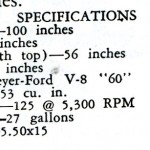

I’ve had the pleasure to help restore one.
It’s no. 7 of 7 built.
I worked at edwards wire rope with my father (Pete Escoto). He was the welder at the company.
Sterling Edwards would have my father do welding projects on his project cars. I am so glad to know now
How special these cars are. I saw a tv program on the Velocity chanel about the fiberglass cars and remembered
Sterling Edwards cars . Thanks, Ron Escoto
Seen this car in person, belonged to Lee Roy Hartong, he past away last year and this car was sold for 137,000, it sold so cheap beacause it didint have original engine or chassis
As seen in the previous article, yes, Phil Remington was involved. Body was done by Emil Diedt and Lejuie Lesovsky of Indy car fame. Buck was built by Walter Zimmerman.
The article mentions the ski vacation as an inspiration. The specific car seen on the ski trip (I think it was St. Moritz in Switzerland) was a Cisitalia Nuvolari Roadster. Edwards was in Europe for the 1948 Olympics.
The car did use an Ardun ohv conversion, probably built up by Eddie Meyer Engineering. What has never been clear to me was whether the usual 153 c.i. engine was sleeved down to two liters to meet sports car class limits.
The ohv conversion was originally created by Zora Arkus-Duntov for use on midget engines, but they were so poorly made that he couldn’t really sell them. Almost the same story for the kit for the full size Ford and Merc blocks. Although these conversions are legendary, it wasn’t until Don Clark and Clem Tebow, a couple of SoCal hot rodders redid them after Duntov abandoned the project, that they really worked and were successful in some famous dragsters and salt flats streamliners.
Michael T. Lynch
Geoff – You raise an interesting point – it makes more sense that they would have used the bucks from the R26 car and not the car itself. That means that, perhaps, the R26 car was not in Sterling Edward’s shop while he was building the R62. So, it could be that the cycle fendered aluminum body on the R26 chassis was being developed at the same time as the R62 car.
Glenn
Hi Glenn….Phil (Remington) says they used the buck from the first car (R26) and modified it to create the shape for pulling the body for what would become the R62 (fiberglass). Not the R26 car itself but the buck. Small difference here, but interesting detail. Same end result. Everything else you shared seems consistent with what I’ve found too. I have a call into Phl tomorrow for a few new tidbits of info as well. Keep the comments coming 🙂 Geoff
Geoff – I think you’ll find that Serling hired Phil Remington, full-time, late in the summer of 1951. Mr. Edwards rented/leased a building next to E. H. Edwards wire rope facility in South SanFrancisco to build the fiberglass R62, as it was called. They covered the R26 car with plaster to make molds for the R62. Serling had connections with some of the management people at Kaiser and got a new Henry J chassis – chosen for its wheelbase. He then got a new Chrysler Hemi V8 and modified it with more carbs and coupled that to a DeSoto three speed manual tranny – fabricated a drive shaft and hooked it to a Ford rear end. This information has been pieced together from notes in my Edwards America file.
Hi Glenn… I wish your assessment was as easy as it sounds. I’ll get ahold of Phil Remington and see if he can walk me thru the chronology of the 3 bodies/2 chassis cars. I have not found any reference (yet) as you indicated above which would show that the second body on the first chassis appeared after the fiberglass bodied car. Rather, I have found only information that confirms the first chassis car with a V8 “60” was rebodied with the Haggeman body (hence chassis 1/car 2) and that that evolved into a new project with a different chassis (Henry J), larger engine (Chrysler) and fiberglass body based on the first aluminum body built by Diedt. Whew! Lots of writing. If you have information from the era (vintage mag articles) discussing a different lineage along with all 3 cars – send my way. Keep in mind that the absence of discussion around the Hagemann bodied car in the era does not mean that it came “third.” Lots to do here Glenn, and look forward to your help. Geoff
This car was the very first WINNER at Pebble Beach and it won a race in Palm Springs, CA in 1950. Sterling’s next car was NOT the aluminum bodied car by Jack Hagemann, it was nearly a duplicate of this car only built with a fiberglass body on a Henry J chassis with a Chrysler Hemi V8. The engine proved to be too much for the chassis and body (doors popped open while racing and the frame twisted under power). The body of the R-26 was used as a mold for his second car and with the exception of the grille opening and removal of the raised rear fender portions, it was nearly identical in appearance.
I would have to agree, that is one terrific looking car particularly in light of when it was designed. And what of the racing chassis alloy bodied car…
A surprising number of old specials have surfaced in the last 30 plus years.